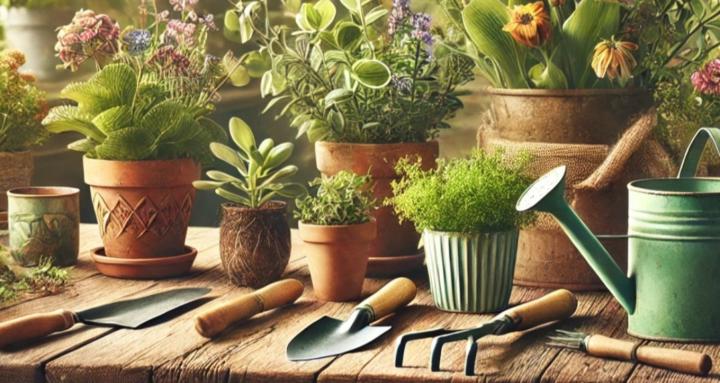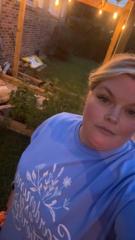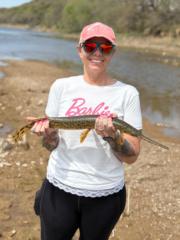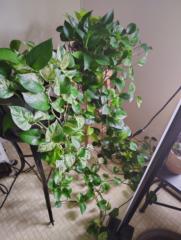Aug 13 • Garden Gear & DIY Hacks
Favorite Fall Fertilizers for Flowering and Fruiting in Pots
As the weather begins to shift and summer starts to wane, your container garden doesn’t have to slow down. In fact, fall is a prime time for pushing out a final flourish of blooms and bringing in a bountiful harvest from your fruiting plants. The secret? Feeding them right.
Let’s talk about the best fall fertilizers to keep your potted flowers glowing and your edibles going.
𝐖𝐡𝐲 𝐅𝐞𝐫𝐭𝐢𝐥𝐢𝐳𝐞 𝐢𝐧 𝐅𝐚𝐥𝐥?
Fall often brings cooler temperatures, but your containers are still actively growing. Late-season flowering plants and fruiting veggies like tomatoes, peppers, and strawberries need an extra boost of nutrients to keep producing.
𝐅𝐞𝐫𝐭𝐢𝐥𝐢𝐳𝐢𝐧𝐠 𝐧𝐨𝐰 𝐬𝐮𝐩𝐩𝐨𝐫𝐭𝐬:
* More blossoms and fruit
* Stronger root growth before winter
* Better resistance to cooler temps and disease
𝐖𝐡𝐚𝐭 𝐭𝐨 𝐋𝐨𝐨𝐤 𝐟𝐨𝐫 𝐢𝐧 𝐅𝐚𝐥𝐥 𝐅𝐞𝐫𝐭𝐢𝐥𝐢𝐳𝐞𝐫𝐬
The needs of your containers depend on whether you’re growing for flowers or fruit, but here are some basics:
🌼 𝐅𝐨𝐫 𝐅𝐥𝐨𝐰𝐞𝐫𝐢𝐧𝐠 𝐏𝐥𝐚𝐧𝐭𝐬:
Choose a bloom booster fertilizer with a higher middle number (phosphorus).
* Look for ratios like 10-30-20 or 15-30-15
* Supports longer-lasting and more abundant blooms
𝐅𝐚𝐯𝐨𝐫𝐢𝐭𝐞𝐬:
* Jack’s Classic Blossom Booster
* Dr. Earth Flower Girl Bud & Bloom Booster
* Miracle-Gro Bloom Booster Water Soluble Plant Food
🍅 𝐅𝐨𝐫 𝐅𝐫𝐮𝐢𝐭𝐢𝐧𝐠 𝐕𝐞𝐠𝐞𝐭𝐚𝐛𝐥𝐞𝐬 & 𝐄𝐝𝐢𝐛𝐥𝐞𝐬:
Go for a balanced fertilizer or one slightly higher in potassium.
* Look for ratios like 5-10-10 or 4-6-8
* Encourages fruit development, stronger stems, and healthier plants
𝐅𝐚𝐯𝐨𝐫𝐢𝐭𝐞𝐬:
* Espoma Tomato-tone Organic Fertilizer
* Neptune’s Harvest Fish & Seaweed Fertilizer
* FoxFarm Big Bloom Liquid Plant Food
𝐎𝐫𝐠𝐚𝐧𝐢𝐜 𝐎𝐩𝐭𝐢𝐨𝐧𝐬 𝐟𝐨𝐫 𝐭𝐡𝐞 𝐖𝐢𝐧
If you’re growing edibles, opt for organic fertilizers when possible. These break down more slowly, feeding your plants naturally while improving soil health.
𝐓𝐫𝐲:
* Compost tea
* Worm castings
* Fish emulsion
* Seaweed extract
𝐅𝐞𝐫𝐭𝐢𝐥𝐢𝐳𝐢𝐧𝐠 𝐓𝐢𝐩𝐬 𝐟𝐨𝐫 𝐅𝐚𝐥𝐥 𝐂𝐨𝐧𝐭𝐚𝐢𝐧𝐞𝐫𝐬
* 𝐖𝐚𝐭𝐞𝐫 𝐟𝐢𝐫𝐬𝐭! Fertilize when the soil is moist to avoid root burn.
* 𝐃𝐨𝐧’𝐭 𝐨𝐯𝐞𝐫𝐝𝐨 𝐢𝐭.. A little goes a long way—especially in fall when plants are slowing down.
* 𝐀𝐩𝐩𝐥𝐲 𝐢𝐧 𝐭𝐡𝐞 𝐦𝐨𝐫𝐧𝐢𝐧𝐠 so plants have time to absorb nutrients before cooler evening temps.
* 𝐒𝐭𝐨𝐩 𝐟𝐞𝐫𝐭𝐢𝐥𝐢𝐳𝐢𝐧𝐠 𝐨𝐮𝐭𝐝𝐨𝐨𝐫 𝐩𝐞𝐫𝐞𝐧𝐧𝐢𝐚𝐥𝐬 4–6 weeks before your first expected frost to help them harden off.
𝐁𝐨𝐧𝐮𝐬 𝐓𝐢𝐩: 𝐏𝐚𝐢𝐫 𝐅𝐞𝐫𝐭𝐢𝐥𝐢𝐳𝐞𝐫 𝐰𝐢𝐭𝐡 𝐚 𝐌𝐮𝐥𝐜𝐡 𝐑𝐞𝐟𝐫𝐞𝐬𝐡
Top off your containers with fresh mulch (like straw or shredded bark) after fertilizing. It locks in moisture, keeps soil temps stable, and makes nutrients last longer.
Even as the days shorten, your container garden can keep blooming and fruiting beautifully—with just the right kind of fall feeding. 🪴💪🍂
3
0 comments

skool.com/gardening
🌱 Unlock your green thumb in the most supportive container gardening group online — exclusive tips, plant hacks, and growing wins await!
Powered by





